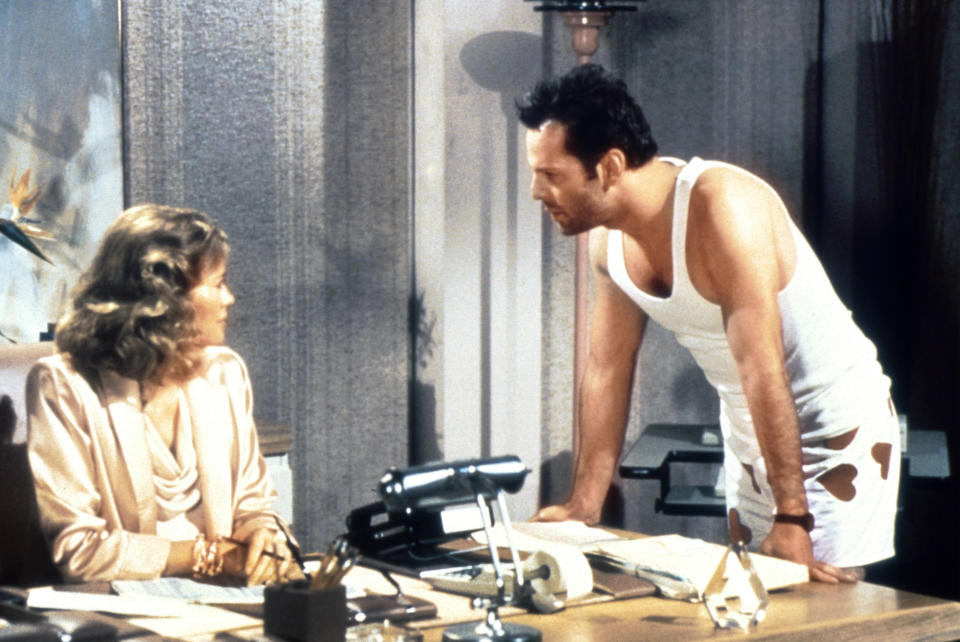‘Moonlighting,’ One of TV’s Most Dazzling and Dysfunctional ’80s Hits, Is Coming to Hulu

- Oops!Something went wrong.Please try again later.
- Oops!Something went wrong.Please try again later.
- Oops!Something went wrong.Please try again later.
“Moonlighting,” the ’80s detective series that revived Cybill Shepherd’s career and gave Bruce Willis his, has long been notoriously unavailable. But all that changes when its 67 episodes begin streaming on Hulu on October 10.
Yes, that’s correct: Five seasons encompassed all of just 67 episodes of a network show. The series — created by Glen Gordon Caron — was infamous for missing its deadlines to make it to air (there’s even a joke in “The Golden Girls” about staying in to watch an episode that’s “only been rerun three times”) and by on-set strife that garnered reams of tabloid coverage.
More from IndieWire
Prevented by music rights issues from streaming (the entire series came out on DVD in the early 2000s, though those are long out of print), the series is poised to win over a new generation of fans for whom the behind-the-scenes drama will just be background noise. Per TVLine, the songs sung by the cast and the Al Jarreau theme song remain intact; ambient music has been swapped out where necessary. More importantly, one of the most technically virtuosic series of the ’80s will be readily available to inspire and dazzle.
As newly broke model Maddie Hayes (Shepherd) reluctantly teams up with wise-ass P.I. David Addison (Willis) to make a success out of the Blue Moon Detective Agency that she owns, the scripts and performances redefine the concept of chemistry. But while Shepherd and Willis’ verbal sparring and their all-time great will-they-or-won’t-they romance turned the series into a sensation, “Moonlighting” was using its success to take wild swings.
One of the most acclaimed episodes of TV ever came early in Season 2 with “The Dream Sequence Always Rings Twice.” Both Addison and Maddie dream up alternate stories behind a 1940s-era murder, playing the wife and her lover behind the murder of her husband. The dreams were filmed entirely in black and white, making the network suits leery enough that Shepherd convinced her friend Orson Welles to provide an introduction explaining that the audiences’ TVs were not broken. (The moment is typically Wellesian, circa 1985.)

“Dream Sequence” frequently tops conversations about the show — along with the “Taming of the Shrew” spoof written entirely in iambic pentameter and with Willis’ dance sequence set to Billy Joel’s “Big Man on Mulberry Street.” But the series also routinely not just broke the fourth wall but absolutely shattered it. Nowhere is more wildly dizzying than in a special episode that finds real-life gossip columnist Rona Barrett visiting the set to get the scoop on why Maddie and David can’t stop fighting long enough to finish an episode on time. That episode also features one of the series’ most deliriously meta jokes, in which it acknowledges the outrage that accompanied Shepherd’s soft-focus close-ups. (No less than the Los Angeles Times wrote an article about it, demanding to know, “Is she deformed or what? The ‘halo effect’”’ is annoying and unnecessary. It does little to disguise the toll that the years may have taken on Cybill.” The article includes an update, announcing that the effect was initially used to create a glamorous 1930s look for Maddie and was greatly reduced as the show went on.)
Add in the list of guest stars the show attracted over the years, the sheer delight in playing with genre conventions and the ideas of what an hour-long network series could or should be, and one of the all-time greatest riffs on “A Christmas Carol” ever filmed, and you might get a better sense of why the “Moonlighting” streaming news has caused such a hullabaloo. By October 12, you’ll never have Al Jarreau’s theme song out of your head — and you’ll wonder how you ever lived without all 67 episodes immediately available.
Best of IndieWire
Where to Watch This Week's New Movies, from 'The Creator' to 'Fair Play'
The Best Thrillers Streaming on Netflix in October, from 'Fair Play' to 'Emily the Criminal'
Sign up for Indiewire's Newsletter. For the latest news, follow us on Facebook, Twitter, and Instagram.

